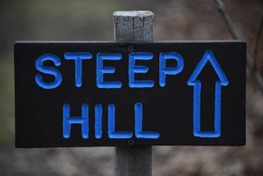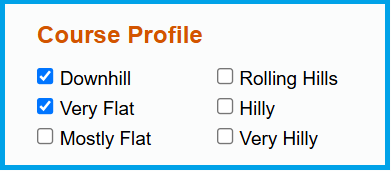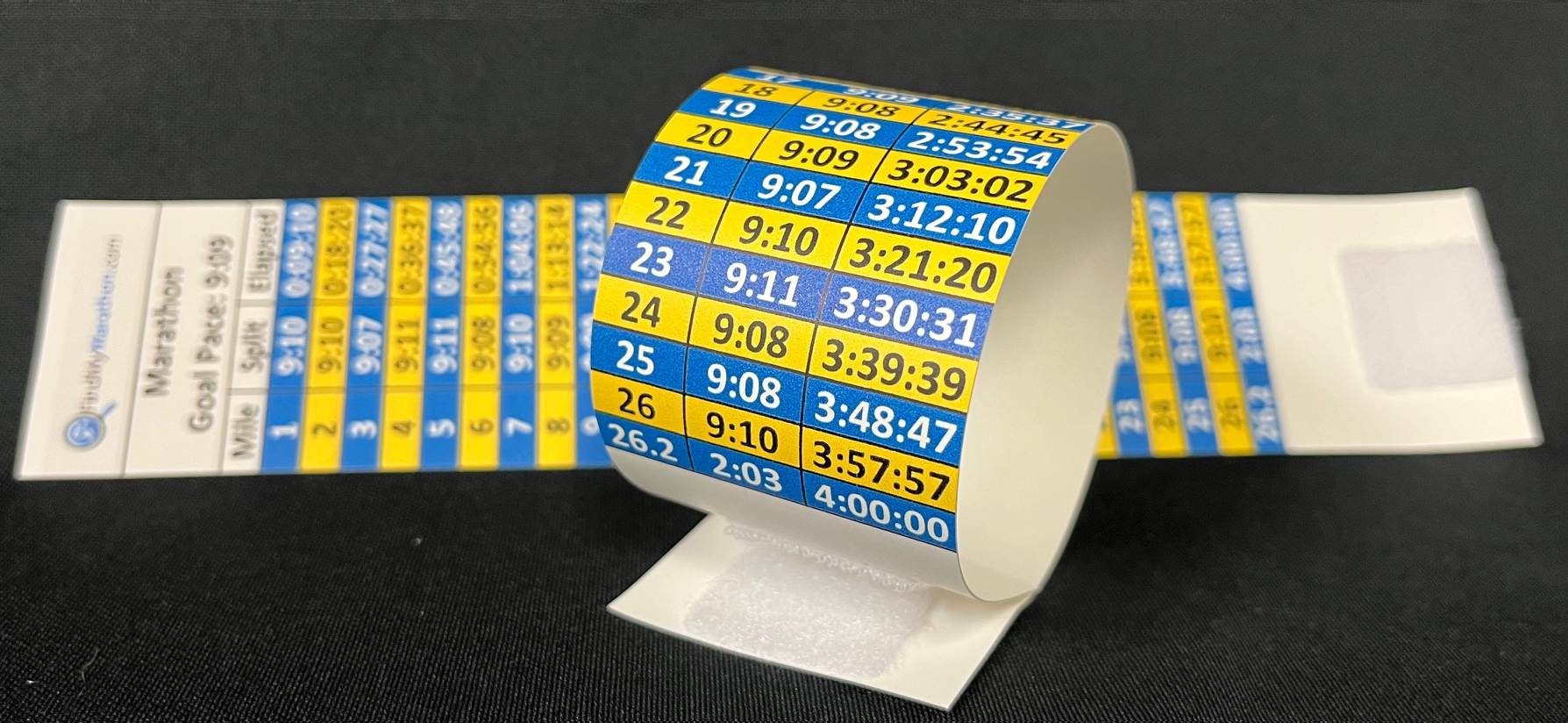 The marathon. 26.2 miles of grit, determination, and hopefully, a well-executed pacing strategy. But what happens when the course isn't pancake flat? Elevation changes, whether subtle rollers or significant climbs and descents, can dramatically impact your pace and overall race experience. Ignoring them in your planning is a recipe for a painful day. Let's dive into how elevation affects your marathon pace and how to adjust your strategy for a successful race.
The marathon. 26.2 miles of grit, determination, and hopefully, a well-executed pacing strategy. But what happens when the course isn't pancake flat? Elevation changes, whether subtle rollers or significant climbs and descents, can dramatically impact your pace and overall race experience. Ignoring them in your planning is a recipe for a painful day. Let's dive into how elevation affects your marathon pace and how to adjust your strategy for a successful race.
The Extra Effort of Going Up
It's no secret: running uphill requires more effort than running on flat ground. You're working against gravity, engaging different muscle groups more intensely, and your heart rate will naturally climb.
Increased Energy Expenditure: Your body has to work harder to propel you upwards. This means you'll burn more calories and fatigue faster if you try to maintain the same pace you'd run on flat terrain.
Shorter Stride Length: To maintain balance and power, your stride length will likely shorten on inclines. This means you'll be taking more steps per minute to cover the same distance.
Increased Heart Rate: Your cardiovascular system has to work harder to deliver oxygen to your working muscles, leading to a higher heart rate at the same perceived effort compared to flat running.
Muscle Strain: Uphill running puts more stress on your calves, quads, and glutes. Ignoring this increased strain can lead to early muscle fatigue and potential cramping later in the race.
The Temptation (and Peril) of Going Down
While downhill running might seem like a welcome break, it presents its own set of challenges and can be just as detrimental to your pace if not managed correctly.
Increased Impact Forces: Gravity assists you downhill, but this also means your legs absorb significantly more impact with each stride. This can lead to muscle damage, particularly in your quads, and contribute to delayed onset muscle soreness (DOMS) post-race.
Longer Stride Length (and Potential for Overstriding): The natural tendency downhill is to lengthen your stride to take advantage of the momentum. However, overstriding can put excessive stress on your joints and lead to a less efficient running form.
 Difficulty Maintaining Control: As you pick up speed downhill, it can be harder to maintain a consistent and controlled pace. This can lead to going out too fast and burning valuable energy early.
Muscle Fatigue (Eccentric Contractions): Your muscles are working eccentrically (lengthening under tension) to control your descent. This type of muscle contraction is a major contributor to muscle damage and fatigue.
Difficulty Maintaining Control: As you pick up speed downhill, it can be harder to maintain a consistent and controlled pace. This can lead to going out too fast and burning valuable energy early.
Muscle Fatigue (Eccentric Contractions): Your muscles are working eccentrically (lengthening under tension) to control your descent. This type of muscle contraction is a major contributor to muscle damage and fatigue.
If you are running a significantly downhill marathon, read our article,
How to Pace a Downhill Marathon – Tips & Strategy for a Fast Finish for tips and best practices.
Pacing Strategies for Undulating Courses
The key to pacing a marathon with elevation changes is to focus on effort, not strictly on maintaining a consistent pace per mile. Here's how to adapt your strategy:
Uphills: Shorten Your Stride and Ease Off the Pace: Don't fight the hill. Shorten your stride, lean slightly into the incline, and allow your pace to naturally slow. Focus on maintaining a consistent effort level. Think of it as a "power hike" if the incline is steep.
Downhills: Control Your Descent and Avoid Braking: Resist the urge to bomb downhills. Maintain a slightly shorter, quicker stride to control your speed and reduce impact. Engage your core to stay stable and avoid leaning back, which acts as a brake and increases quad strain. Let gravity assist you, but stay in control.
Flats: Re-establish Your Goal Pace: Use the flat sections to recover and settle back into your target pace. These are your opportunities to make up some time lost on the uphills, but don't overdo it trying to compensate all at once.
Rolling Hills: Maintain Consistent Effort: On courses with gentle rolling hills, try to maintain a relatively consistent effort level. Your pace will naturally fluctuate slightly, but avoid significant surges up or down.
Know the Course Profile: Before race day, thoroughly study the course elevation profile. Identify the major climbs and descents and plan your strategy accordingly. Knowing what's coming allows you to mentally and physically prepare. For certified marathon, we have the course elevation chart on the race detail page. One of our options on our Pace Bands is to put the elevation profile on the back of your band.
Practice on Similar Terrain: Incorporate hill repeats and runs on undulating routes into your training. This will help your body adapt to the demands of running on varied terrain and teach you how to gauge your effort effectively.
Listen to Your Body: More than on a flat course, it's crucial to listen to your body on an elevation-heavy marathon. Don't be afraid to adjust your pace based on how you're feeling, especially on challenging climbs.
Find Your Hilly Challenge on FindMyMarathon.com!
Ready to test your uphill or downhill-running prowess? FindMyMarathon.com has the tools to help you discover your next challenging and rewarding race:

Advanced Search: Use the "Course Profile" filter to specifically search for marathons with "Rolling Hills," "Downhill," or "Flat" courses on our Advanced Searh Tools (Advanced, Location, State). You can also look at elevation profiles on individual race detail pages.
Course Descriptions: On most race detail pages, we include the locations of any significant uphills or downhills. Pay close attention to these details.
Runner Reviews: Read reviews from past participants. They often provide valuable insights into the difficulty and impact of the course's elevation. If you would like to leave insight on a particular marathon, please leave a review to help your fellow runners out.
Our Pace Bands Can Help You Pace You Through the Hills
FindMyMarathon.com offers the unique ability for you to create a Pace Band specifically tailored to the elevation profile of your chosen marathon. Here's how it helps you master the hills:
Elevation-Adjusted Splits: When you order a custom Pace Band for a specific race through FindMyMarathon.com, we utilize the official course elevation data. This allows us to generate suggested mile splits that account for the increased effort required on climbs and the potential for faster times on descents using our custom algorithm derived from studies on how elevation grades affect running pace and economy.
 Effort-Based Guidance: While the Pace Band still provides target times, it implicitly encourages an effort-based approach. You'll likely see slower suggested splits for uphill sections, prompting you to ease off the pace and conserve energy. Conversely, slightly faster splits on downhills can help you capitalize on gravity without overexerting yourself.
Strategic Recovery on Flats: The Pace Band will also guide you on maintaining your goal pace during the flat sections, allowing you to recover from the climbs and prepare for upcoming elevation changes.
Mental Confidence: Having a tangible guide on your wrist that accounts for the course's unique challenges can significantly boost your mental confidence. Knowing you have a plan specifically designed for the terrain can reduce anxiety and help you stay focused.
Effort-Based Guidance: While the Pace Band still provides target times, it implicitly encourages an effort-based approach. You'll likely see slower suggested splits for uphill sections, prompting you to ease off the pace and conserve energy. Conversely, slightly faster splits on downhills can help you capitalize on gravity without overexerting yourself.
Strategic Recovery on Flats: The Pace Band will also guide you on maintaining your goal pace during the flat sections, allowing you to recover from the climbs and prepare for upcoming elevation changes.
Mental Confidence: Having a tangible guide on your wrist that accounts for the course's unique challenges can significantly boost your mental confidence. Knowing you have a plan specifically designed for the terrain can reduce anxiety and help you stay focused.
Find your race on our
Course-Based Pace Band page or create your own splits on our
Custom Pace Band page.
Don't let hills intimidate you! By understanding how elevation affects your pace and implementing smart pacing strategies, you can conquer any marathon course, no matter the ups and downs. Use FindMyMarathon.com to find and pace your perfect (and perhaps a little challenging) race and train smart for a triumphant finish!
©2025, All information contained herein is the sole property FindMyMarathon.com. FindMyMarathon.com reserves all rights and privileges regarding the use of this information. Any unauthorized use, such as distributing, copying, modifying, or reprinting, is not permitted. To obtain permission to reproduce or distribute this document contact info@findmymarathon.com for information about reproduction or distribution services.
 The marathon. 26.2 miles of grit, determination, and hopefully, a well-executed pacing strategy. But what happens when the course isn't pancake flat? Elevation changes, whether subtle rollers or significant climbs and descents, can dramatically impact your pace and overall race experience. Ignoring them in your planning is a recipe for a painful day. Let's dive into how elevation affects your marathon pace and how to adjust your strategy for a successful race.
The marathon. 26.2 miles of grit, determination, and hopefully, a well-executed pacing strategy. But what happens when the course isn't pancake flat? Elevation changes, whether subtle rollers or significant climbs and descents, can dramatically impact your pace and overall race experience. Ignoring them in your planning is a recipe for a painful day. Let's dive into how elevation affects your marathon pace and how to adjust your strategy for a successful race.


